Are you feeling overwhelmed by the vast selection of leather options available in the market today? This extensive guide serves as your essential resource for making well-informed choices regarding various leather products. Each type of leather comes with its own unique advantages tailored for specific uses, offering everything from the luxurious softness of calfskin to the remarkable durability of full-grain leather. By understanding the distinct characteristics and origins of high-quality leather, you can ensure that your selections not only look appealing but also enhance the longevity and performance of your items. Whether you are in search of shoes, jackets, or accessories, this guide will assist you in identifying the most suitable leather type for your specific needs. Remember, selecting poor-quality leather can lead to premature wear and financial loss, so let’s delve into the various types and their ideal applications.
Explore the Different Types of Leather and Their Unique Characteristics
The extensive range of leather types available each possesses distinct properties and applications, particularly in the realm of footwear manufacturing. Here is a thorough overview of the essential characteristics that differentiate each leather type:
| Leather Type | Main Characteristics |
|---|---|
| Full-grain | Unmatched quality, natural surface, ultimate durability |
| Top-grain | Refined sanded surface, good durability, budget-friendly |
| Split leather | Lower layer of hide, less durable, economical option |
| Nubuck | Sanded top surface, soft and velvety texture |
| Suede | Soft, fuzzy finish with limited water resistance |
- Grain quality is a critical factor influencing the overall durability of leather
- Surface texture greatly affects both visual appeal and maintenance requirements
- Thickness is vital in determining the most appropriate applications for each leather type
Gain Insights into Popular Leather Types for Smart Selections
When selecting leather that aligns with your unique requirements, it’s essential to understand the common varieties and their best applications:
| Type | Best Use |
|---|---|
| Calfskin | Ideal for elegant dress shoes and high-end accessories |
| Cowhide | Best suited for robust boots and heavy-duty items |
| Pigskin | Perfect for cost-effective accessories |
| Sheepskin | Excellent for soft goods and warm linings |
| Goatskin | Commonly used for gloves and light accessories |
Dive into Exotic Leather Varieties and Their Unique Features
The fascinating world of exotic leathers presents a variety of unique characteristics and striking visual elements that set them apart from standard leather types:
| Type | Properties |
|---|---|
| Alligator | Luxury items noted for exceptional durability |
| Ostrich | Renowned for its distinctive pattern and buttery soft texture |
| Stingray | Famous for extreme durability and a unique, textured finish |
| Python | Flexible with distinctive scales that add a unique character |
| Lizard | Characterized by fine texture and intricate patterns |
Products crafted from bonded leather consist of leather fibers amalgamated with binding agents. Here’s what you should keep in mind:
| Aspect | Detail |
|---|---|
| Composition | Made from leather fibers blended with binding materials |
| Durability | Generally less durable than genuine leather alternatives |
| Cost | A budget-friendly option for cost-conscious consumers |
| Usage | Commonly utilized in furniture and a variety of accessories |
| Care needs | Requires minimal maintenance to sustain its appearance |
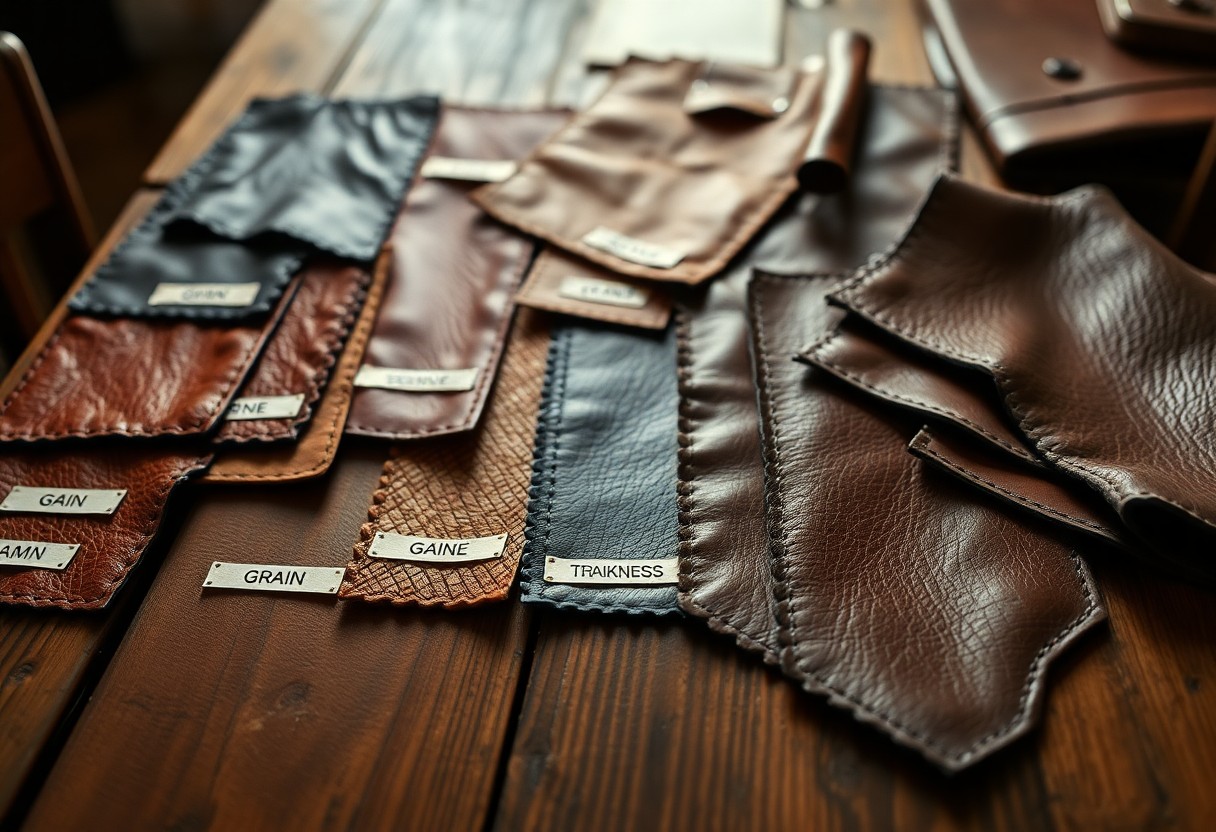
Key Factors That Influence the Quality of Leather
While many variables can affect the quality of leather, the primary factors include animal source, hide preservation, tanning process, and finishing techniques. The durability and aesthetic appeal of your leather products heavily rely on these elements working together harmoniously. Understanding these factors empowers you to make informed selections when choosing leather items that effectively meet your needs.
Evaluating Leather Quality Based on Animal Source
One of the most critical determinants of leather quality is the animal source. The characteristics of your leather are closely linked to the age, breed, and living conditions of the animal from which it originates. For example, calfskin is known for its exceptional softness and flexibility, making it ideal for luxury items, while the tougher texture of full-grown cattle hide provides durability for everyday use. Additionally, exotic leathers sourced from crocodiles offer unique textures and remarkable durability, making them highly coveted in luxury markets.
The Importance of the Tanning Process in Enhancing Leather Quality
The tanning process is crucial as it transforms raw hides into usable leather through various chemical treatments. For instance, chrome tanning results in softer, more flexible leather, while vegetable tanning produces firmer and more natural leather options. The quality of the finished leather product is heavily influenced by the expertise and precision applied during the tanning process. Moreover, the duration and temperature control throughout tanning are vital for ensuring the leather maintains its integrity. Inconsistencies in these processes can lead to weak spots and uneven coloration, while rushed methods may produce leather that deteriorates quickly.
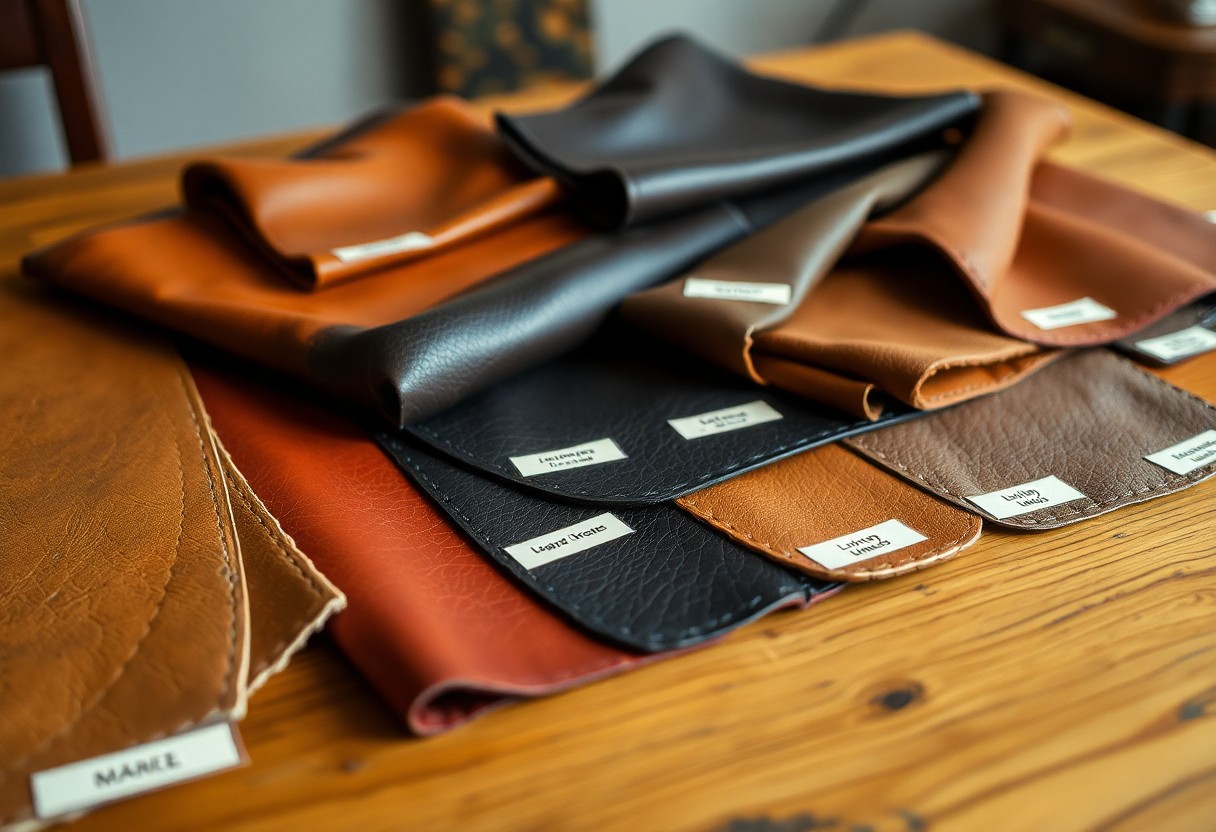
Essential Tips for Identifying High-Quality Leather
When assessing leather quality, keep these essential guidelines in mind. Look for full-grain leather that displays a consistent color and minimal surface blemishes. Pay close attention to the grain pattern to ensure it appears natural and uniform. High-quality leather is typically characterized by a pleasant aroma and should feel smooth to the touch. Additionally, the edges should be clean and well-finished. While price can often serve as a reliable indicator of quality, it should never be the sole factor influencing your decision.
Conduct a Visual Inspection for Quality Evaluation
When it comes to examining leather, the smallest details can lead to significant differences in quality. Look for natural markings and avoid leather that shows artificial grain patterns. Your leather should exhibit a uniform color throughout, free from any noticeable discolorations or patches. The surface should be devoid of excessive scratches or scars, as these can compromise both appearance and durability, ultimately affecting the longevity of your leather goods.
Utilizing Physical Testing Techniques to Assess Quality
Quality testing can be performed using straightforward yet effective methods. For instance, bending the leather helps you evaluate its flexibility; watch for any creasing patterns that may indicate inferior quality. Gently pressing your fingernail into the leather surface should create a temporary indentation, a hallmark of genuine leather. The leather should feel smooth and warm to the touch, rather than cold or plastic-like, indicating the authenticity of the material.
It’s important to understand that physical testing can reveal a wealth of information about leather quality. High-quality leather should not crack or develop white marks when bent. You can also perform a water drop test to assess authenticity—genuine leather will absorb water temporarily instead of allowing it to pool on the surface. A flame test, which should only be conducted by professionals, can also confirm the authenticity of the leather.
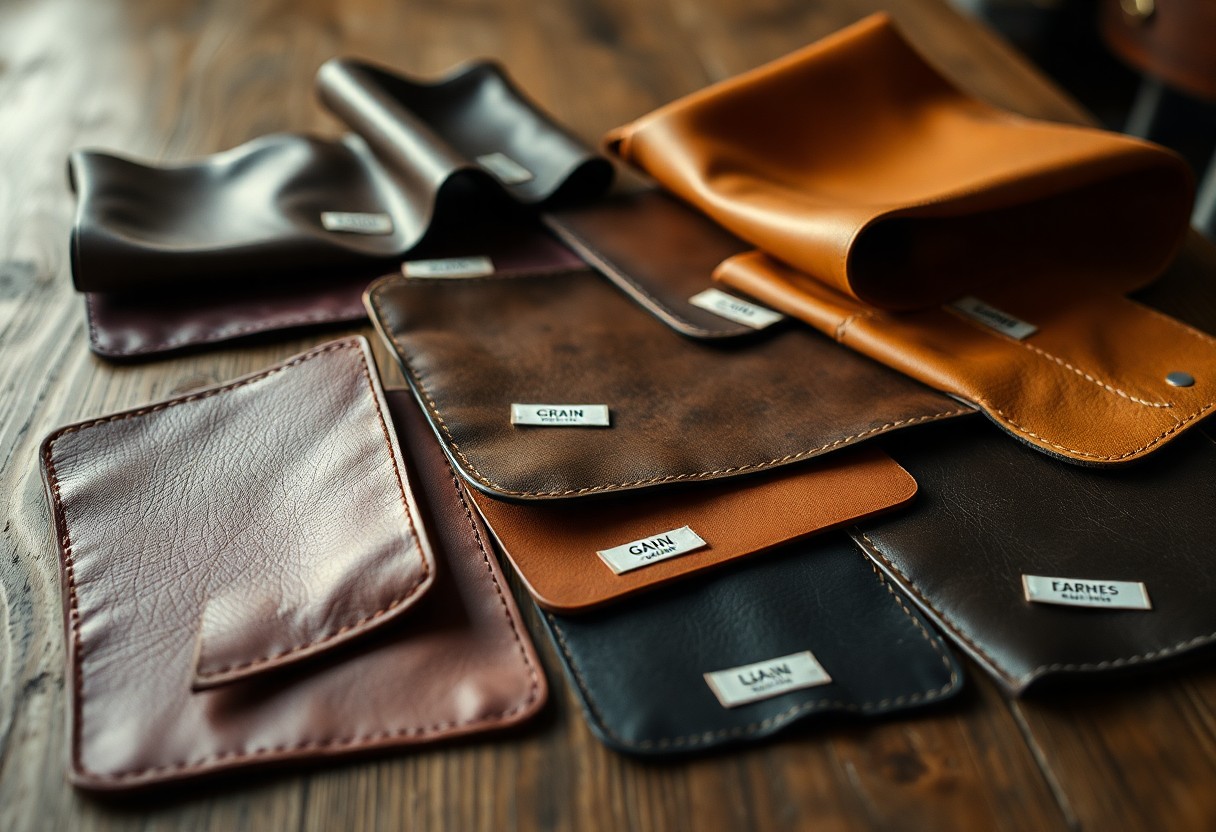
Your Comprehensive Guide to Optimal Leather Care
Unlike synthetic materials, leather requires specialized care to maintain its quality and prolong its lifespan. Regular maintenance is crucial for your leather items to prevent damage and sustain their visual appeal over time.
| Basic Care | Advanced Care |
| Leather cleaner Soft brush Microfiber cloth |
Leather conditioner Weather protector Leather polish |
Effective Cleaning Techniques for Leather Goods
To clean your leather items effectively, start with a dry brush to remove surface dirt and debris. Always test any cleaning product on a small, inconspicuous area first to avoid damaging the leather. When applying leather cleaner, use a soft cloth and employ gentle circular motions, ensuring not to saturate the leather with excessive water, which could lead to damage over time. Proper cleaning techniques are vital to preserving the integrity and appearance of your leather products.
Proper Storage and Protection Techniques for Leather
When it comes to storing your leather items, thoughtful consideration is essential. Ensure that they are kept in a cool, dry place away from direct sunlight to prevent fading and drying out. It's advisable to apply leather conditioner every 3-6 months to avoid cracking and to preserve the leather's natural suppleness. The effectiveness of your leather care routine heavily relies on consistent application and attention to detail.
Protect your items from water damage by utilizing a high-quality waterproofing product. Regular conditioning helps maintain the leather’s natural oils, while proper storage practices prevent shape distortion and color fading, ensuring your leather items remain in top condition for years to come.
Thorough Analysis of the Advantages and Disadvantages of Various Leather Types
To aid in informed decision-making regarding leather products, here’s a detailed comparison of different leather types and their characteristics. Each type presents unique advantages and limitations that affect their suitability for various applications.
| Pros | Cons |
|---|---|
| Full-grain leather: unparalleled durability | Higher price point, may display all natural marks |
| Top-grain leather: smooth finish, water-resistant | Not as durable as full-grain options |
| Split leather: affordable and flexible | Lower quality, less durable than alternatives |
| Nubuck: sophisticated appearance, soft texture | Requires regular maintenance to retain its beauty |
| Suede: versatile and comfortable | Prone to staining, challenging to clean effectively |
Assessing Durability and Longevity Across Different Leather Types
There is significant variability in how different leather types age and wear over time. Full-grain leather can last for decades when properly cared for, while split leather might require replacement after just a few years of regular use due to its reduced durability. Choosing the right leather type for your application is crucial for ensuring longevity and satisfaction.
Understanding Cost Factors When Choosing Leather
Leather prices can vary significantly based on quality and source. Premium full-grain leather can be 5-10 times more expensive than split leather alternatives, making it essential to balance your budget with the quality you desire. It’s crucial to recognize that investing in higher-quality leather often yields better long-term value, as these materials maintain their appearance and structural integrity significantly longer than their lower-quality counterparts.
Tailoring Maintenance Requirements Based on Leather Quality
There exists a clear correlation between the quality of leather and its maintenance needs. Top-grain and full-grain leathers generally require less frequent yet more specialized care, ensuring their characteristics and appearance are preserved over time. Each leather type necessitates specific cleaning products and techniques, and your maintenance routine should align with the type of leather you own to guarantee optimal preservation and longevity of your valuable investments.
Understanding the Diverse Uses and Applications of Leather
Now that you’ve gained insight into various leather types, you’ll discover that each variety serves distinct purposes based on its unique properties and durability levels. The choice of leather can significantly influence the performance of the final product, making it essential to match the right leather with its intended use for maximum effectiveness.
Fashion and Accessories: The Versatility of Leather
In the fashion industry, applications range from luxurious high-end goods to everyday essentials. For example, you’ll find calfskin utilized in premium shoes and handbags, while exotic leathers such as crocodile and stingray are prominent in exclusive designer pieces. Your leather accessories could include wallets, belts, and watch straps, each crafted from specific leather types to ensure optimal functionality and style, catering to various tastes and preferences.
Furniture and Upholstery: Prioritizing Durability
When considering furniture, full-grain and top-grain leathers are the most popular selections. Upholstered pieces made from these durable materials can withstand daily usage while developing a stunning patina over time, enhancing their visual appeal and character. When selecting leather for your furniture, various factors come into play, including durability ratings, with full-grain leather having the potential to last up to 25 years when properly maintained. The choice of leather significantly affects both aesthetic quality and longevity, ensuring that your investment endures over time.
Industrial Applications: The Demand for High-Performance Materials
Industrial uses of leather necessitate high-performance materials. Specialized leather types are employed in automotive interiors, protective gear, and heavy machinery components, where durability is of utmost importance. To ensure optimal performance in these industrial settings, your leather selections must meet specific standards. Safety-rated leathers are utilized in protective equipment, while specialized treatments enhance resistance to heat, chemicals, and wear in industrial machinery, ensuring longevity and reliability.
Empowering Yourself to Make Informed Choices About Leather
With the knowledge you’ve gained from this guide, you are now empowered to make informed decisions regarding the various types of leather that cater to your unique needs. Understanding the characteristics of leather will enable you to choose the ideal material for your footwear and accessories. From the versatility of calfskin to the exceptional qualities of exotic leathers, you can now weigh durability, comfort, and style against your specific preferences. Each leather type offers distinct advantages, allowing you to align these qualities with your intended use. Whether you seek durable boots crafted from cowhide or sophisticated dress shoes made from calfskin, you can confidently select the perfect leather to suit your style.
Frequently Asked Questions Related to Different Leather Types
Q: What differentiates calfskin from full-grown cow leather?
A: Calfskin is sourced from young cattle under one year of age, providing a softer, more supple texture with finer pores. In contrast, cow leather originates from adult animals, yielding thicker and sturdier leather with more prominent markings. Calfskin is often preferred for high-quality dress shoes, while cow leather is typically used for work boots and more economical footwear options.
Q: What makes shell cordovan stand out among leather types?
A: Shell cordovan is produced from the muscle membrane located beneath the skin of a horse’s rump. This unique leather displays specific traits: it does not crease but instead forms rolls, features a dense shiny surface, and is exceptionally durable. The processing of this leather involves turning it inside out, which distinguishes it from conventional leather types, making it a highly sought-after material.
Q: How do exotic leathers, like crocodile and stingray, differ in properties and applications?
A: Crocodile leather is soft, flexible, and harvested from the belly and sides of the animal, making it a luxurious choice that often requires CITES certification. Conversely, stingray leather is recognized for its extraordinary hardness and durability but can be more challenging to work with. Stingray shoes are typically crafted as wholecuts since the material allows for stitching only between its hard “pearls,” showcasing its unique attributes and appeal.
The article Guide to the different types of leather characteristics and uses appeared first on My Shoes Finder
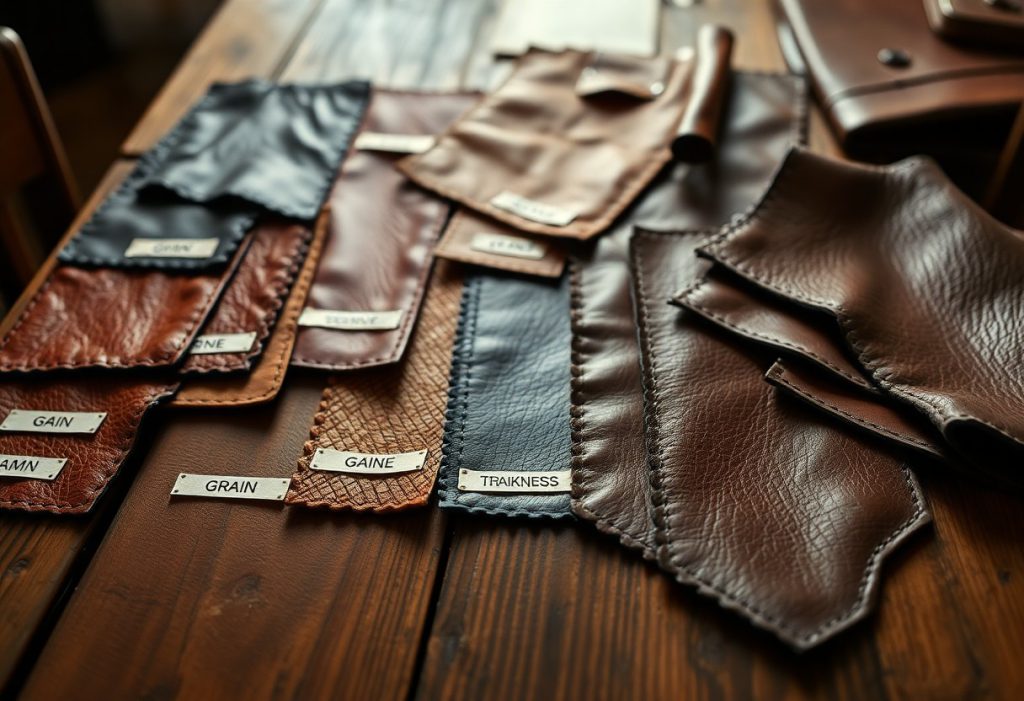
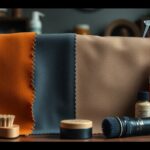
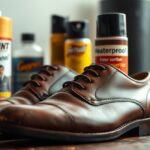


I can completely relate to the feeling of being overwhelmed by the variety of leather options available today. Just recently, I was on the hunt for a durable leather jacket and found myself lost in a sea of choices. It’s intriguing how different types of leather can evoke such distinct qualities, not just in terms of aesthetics, but also in their practicality and longevity.
You’ve raised a crucial point about the overwhelming options in the world of leather today. One aspect that often goes overlooked in discussions about leather types is the environmental impact associated with various production methods. While we’re looking at durability and aesthetics, it’s also key to consider the sustainability of our choices.
I really appreciate your take on navigating the overwhelming world of leather options. It’s true, with so many varieties out there—like suede, patent leather, and the different grades of full-grain and top-grain—it can feel like a maze at times. I remember when I was on the hunt for my first leather jacket; I spent hours researching and almost ended up buying one just because it looked cool, not really understanding the quality behind it. Ultimately, I learned the hard way that investing in a high-quality piece made all the difference.